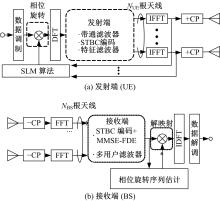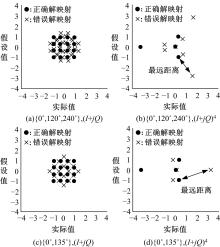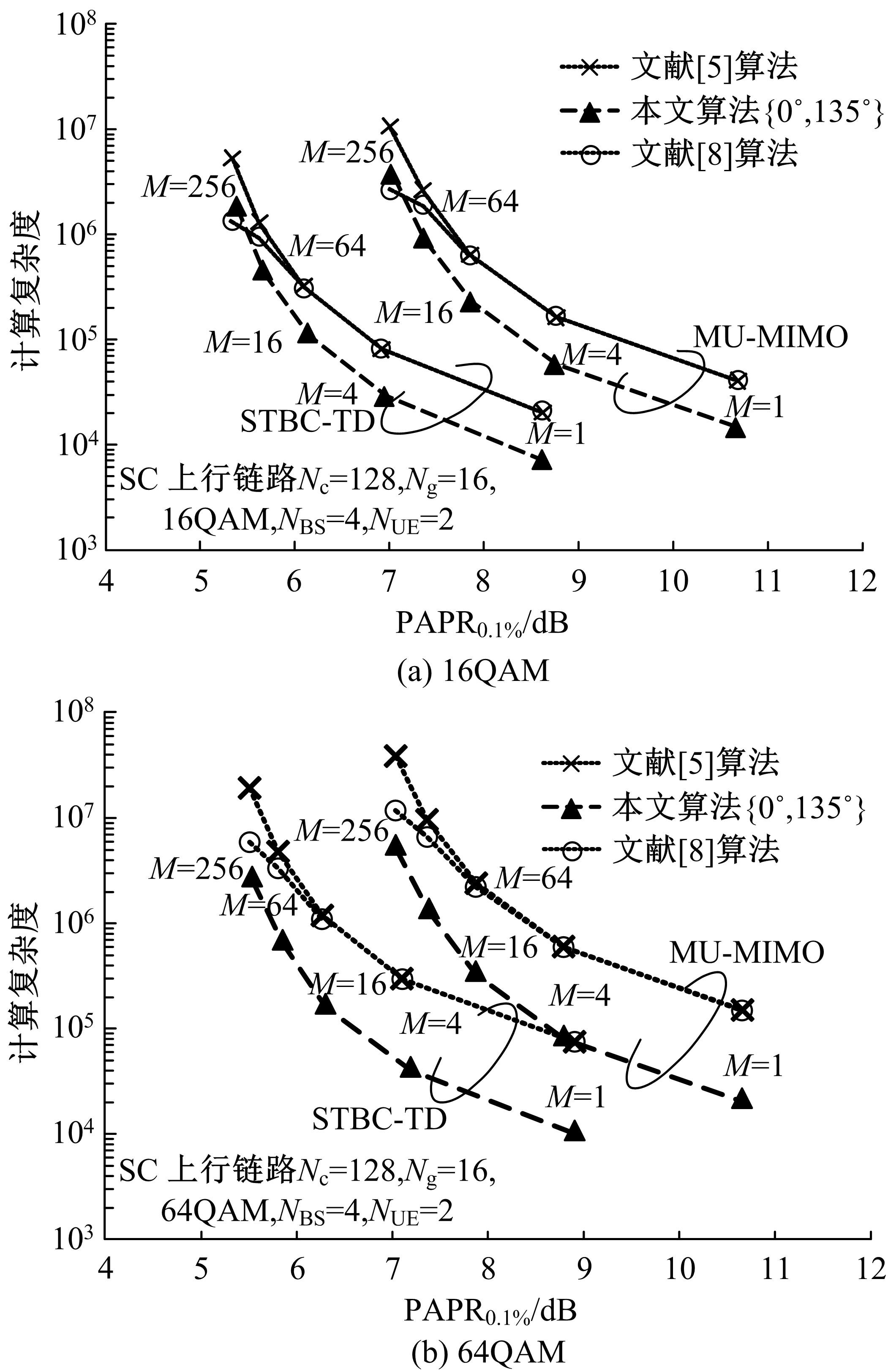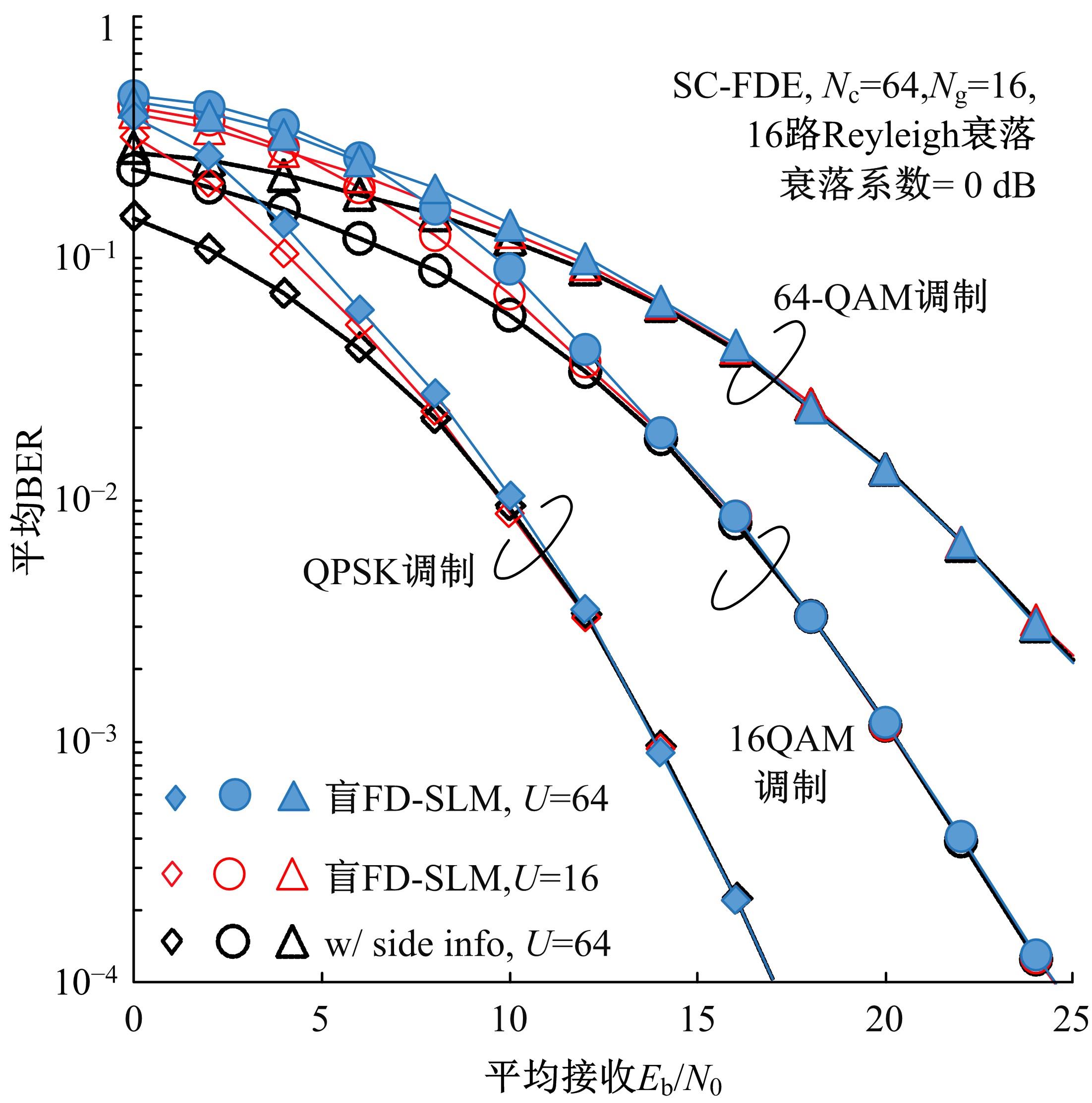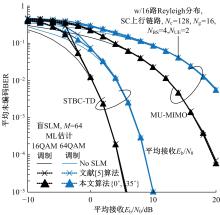Journal of Jilin University(Engineering and Technology Edition) ›› 2023, Vol. 53 ›› Issue (5): 1496-1504.doi: 10.13229/j.cnki.jdxbgxb.20210905
Low⁃complexity phase rotation estimation based on fourth⁃power constellation in blind SLM system
Jin-peng WANG( ),Qing-xue YAO,Bo LI,Xin ZHAO
),Qing-xue YAO,Bo LI,Xin ZHAO
- School of Information Science and Engineering,Dalian Polytechnic University,Dalian 116034,China
CLC Number:
- TG115.28
| 1 | Yuuichi, AOKI. 5G Mobile Communications for 2020 and Beyond, Jul. 2016. |
| 2 | 潘磊, 陈岚, 朱胜利, 等. 一种正交频分复用定时同步算法及其硬件实现优化[J]. 吉林大学学报: 工学版, 2022, 52(11): 2728-2734. |
| Pan Lei, Chen Lan, Zhu Sheng-li, et al. A new algorithm for OFDM timing synchronization and hardware implementation optimization[J].Journal of Jilin University(Engineering and Technology Edition), 2022,52(11): 2728-2734. | |
| 3 | Wang J P, Ye Z P, Jeremy G, et al. A power control algorithm based on chicken game theory in multi-hop networks[J]. Symmetry, 2019, 11(5): 11050718. |
| 4 | Zunaira B, Zeynep B K E, Xiang L P, et al. Polar codes and their quantum-domain counterparts[J]. IEEE Communications Surveys and Tutorials, 2020, 22(1): 123-155. |
| 5 | 王义君, 张有旭, 缪瑞新, 等. 5G中基于系统中断概率的D2D资源分配算法[J]. 吉林大学学报: 工学版, 2021, 51(1): 331-339. |
| Wang Yi-jun, Zhang You-xu, Miao Rui-xin, et al.D2D resource allocation algorithm based on system outage probability in 5G[J]. Journal of Jilin University (Engineering and Technology Edition), 2021, 51(1): 331-339. | |
| 6 | Boonkajay A, Adachi F. A blind polyphase time-domain selected mapping for filtered single-carrier Signal transmission[C]∥IEEE Vehicular Technology Conference Proceedings, Montreal, Canada,2016: 16759080. |
| 7 | Boonkajay A, Adachi F. PAPR Reduction for STBC Transmit Diversity with Transmit FDE using Blind Selected Mapping[C]∥IEEE VTS Asia Pacific Wireless Commun, Incheon, Korea, 2017. |
| 8 | 国强, 崔玉强, 王勇. 无线传感器网络中基于动态簇的节点调度算法[J]. 吉林大学学报: 工学版, 2022, 52(6): 1466-1476. |
| Guo Qiang, Cui Yu-qiang, Wang Yong. Node scheduling algorithm based on dynamic cluster in wireless sensor network[J]. Journal of Jilin University(Engineering and Technology Edition), 2022, 52(6): 1466-1476. | |
| 9 | Boonkajay A, Adachi F. 2-Step signal detection for blind time-domain selected mapping[J]. 電子情報通信学会技術研究報告, 無線通信システム, Radio Communication Systems, 2016, 116(257): 161-166. |
| 10 | Khorov E, Kiryanov A, Lyakhov A, et al.A tutorial on IEEE 802.11ax high efficiency WLANs[J]. IEEE Communications Surveys and Tutorials, 2019, 21(1): 197-216. |
| 11 | Wang J P, Ye Z P, Jeremy G, et al. A novel linear antenna synthesis for linear dispersion codes based on an innovative hybrid genetic algorithm[J]. Symmetry, 2019, 11(9): 11091176. |
| 12 | Sun D G, Zhang Q Y. A secure constellation design for polarized modulation in wireless communications[J]. IEEE Access, 2020, 8: 130589-130597. |
| 13 | Guo C, Liu F, Chen S, et al. Advances on exploiting polarization in wireless communications: channels, technologies, and applications[J]. IEEE Communications Surveys & Tutorials, 2017, 19(1): 125-166. |
| 14 | 李晗, 杜鹏, 杜颖, 等. 基于遗传算法的无线体域网多路径路由选择方法[J]. 吉林大学学报: 工学版, 2022, 52(11): 2706-2711. |
| Li Han, Du Peng, Du Ying, et al. Multi-path routing method for wireless body area network based on genetic algorithm[J]. Journal of Jilin University (Engineering and Technology Edition), 2022, 52(11): 2706-2711. | |
| 15 | Boonkajay A, Adachi F.A blind polyphase time-domain selected mapping for filtered single-carrier signal transmission[C]∥IEEE 84th Vehicular Technology Conference, Montreal, Canada, 2016: 1-5. |
| 16 | Wang J P, Zou N Y, Zhang Y C, al et, Study on downlink performance of multiple access algorithm based on antenna diversity[J].ICIC Express Letters, 2015, 9(4): 1221-1225. |
| [1] | WANG Xu, OUYANG Ji-hong, CHEN Gui-fen. Measurement of graph similarity based on vertical dimension sequence dynamic time warping method [J]. 吉林大学学报(工学版), 2018, 48(4): 1199-1205. |
| [2] | ZHANG Bao-wei, WANG Ting, ZHANG Chun-ze, WANG Meng. Low time rate control algorithm for H.264/AVC [J]. 吉林大学学报(工学版), 2013, 43(增刊1): 376-379. |
| [3] | ZHANG Song, MA Lin-hua, TANG Hong, TIAN Yu, ZHA Xiang. Construction of QC-LDPC codes with total linear encoding complexity and eliminating short cycles [J]. 吉林大学学报(工学版), 2013, 43(03): 824-829. |
| [4] | LIU Shu-cheng, PAN Xin, WEI Wei, YAN Qing-dong, LAI Yu-yang. Complexity-based robustness analysis of turbulence model in torque converter flow field simulation [J]. 吉林大学学报(工学版), 2013, 43(03): 613-618. |
| [5] | LIN Xiang-yu, TIAN Xiang, CHEN Yao-wu. No-reference video quality assessment based on distortion estimation [J]. 吉林大学学报(工学版), 2013, 43(01): 212-217. |
| [6] | LIU Miao, WANG Ke, CONG Yu-liang. Optimizing PAPR algorithm for cognitive radio based on assignment model [J]. 吉林大学学报(工学版), 2011, 41(6): 1788-1792. |
| [7] | Lu Shoufeng, Yang Zhaosheng, Liu Ximin. Research on urban traffic system based on complexity theory [J]. 吉林大学学报(工学版), 2006, 36(增刊1): 153-0156. |
| [8] | LUAN Ying-zi, LI Jian-dong, LI Xia. Peak-to-average power ratio analysis of MC-CDMA signal by using Golay code [J]. 吉林大学学报(工学版), 2003, (4): 68-72. |
|
||
